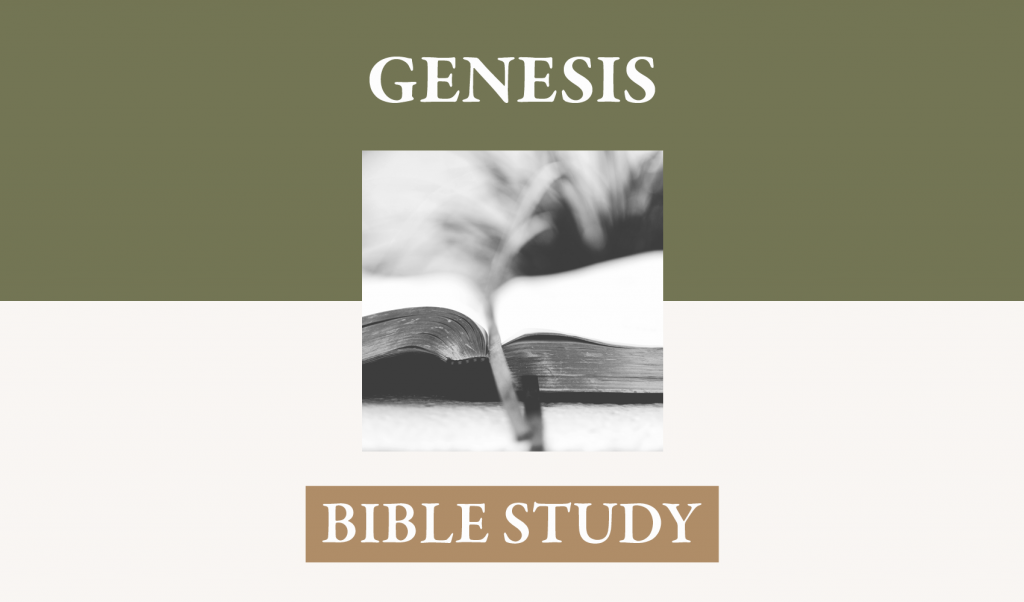Genesis 2:4–24
In Romans 1:18–32, God pointed to creation, including the establishing of gender, as evidence of his “eternal power and godhead” and as realities for which we should be thankful. Perhaps the most obvious evidence of design and original intention in the “natural” world is the biological and emotional fitness and complementariness of humanity existing as male and female. The astounding degree to which sin has affected the moral implications of reason is nowhere more obvious than in the area of sexuality. Not only are heterosexual standards submitted to the moral perversity of fallen humanity, but the question of gender is assigned to human autonomy by completely ignoring the most formidable implications of our being. The revelatory power of this text, therefore, is quite fundamental to tracing the nature of rebellion as it wended its way throughout human history.
Within this chapter we find a recapitulation of chapter one with a more detailed unfolding of the most important part of the first six days.
I. Verse four – This verse gives a conclusive summary of the entire six days of creation, calling it compositely “the day.”
A. Moses emphasized the order of the creation by calling the progressive nature of it “the generations” of the heavens and the earth.
It seems that, by inspiration (for in no other way could Moses have known the things he recorded), Moses wants the reader to observe the order of these separate acts of creation in order to focus on their immediate dependence on divine power, purpose, and wisdom. At the same time, we observe the integration of secondary dependence into the order itself. The seas were created before sea animals and the firmament was established before birds flew in it. The land and light were present for vegetation to be called forth from it and immediately to receive elements necessary for their prospering, though bushes and trees and moss and herbs were not in their original creation dependent on anything but divine power to initiate their being.
B. After the creation of all things the culture of dependence, interdependence, and cause and effect became operative.
This was in order that we might display our likeness to God in applying principles of induction and deduction to harness the benefits intrinsic to the inner workings and composite dependencies in all of creation. Without this we could make no inventions, discover no cures to disease, make no medicines with predictable outcomes, fire no rockets into space nor land on any extra-terrestrial spheres, have no evening weather forecast, invent no internal combustion engines, have no way of expanding the sophistication of electronic devices, etc. God’s wisdom and intellect has put together the world in its beauty and in the complexity of its inner relationships and all the intellects of all humans of all times will never exhaust the possible outcomes of our research and investigation. We will never press our own discoveries beyond the pale of what God has invested in this world as a manifestation of his glory.
I. Verses five and six – Moses summarizes some elements of the creation that laid the groundwork for Man’s appearance.
A. Moses is reminding the reader that the earth itself had produced no vegetation from the succeeding order that would be dependent on the seed being fertilized by the earth.
Gill says, “the plants of the field, which were made out of the earth on the third day, were made before any were planted in it, or any seed was sown therein from whence they could proceed, and therefore must be the immediate production of divine power.”
B. No small plant had “sprung up,” that is, nothing had yet been produced by the potential line of production that would give vegetation to the whole earth.
C. Nor was there rain at this time, but only a mist that came from the operation of the sun on the waters that had been confined to specified spaces so that the dry land could appear.
This could also be taken disjunctively as “nor had even a mist gone up from the land to water the whole face of the ground.” The latter, in fact, seems to carry the purpose of Moses’ reporting of this more coherently, since he is setting forth man as the tender of the creation. “No springing up, no rain, no man to work, not even a mist—then God formed man.”
D. In addition to the inactivity of those factors that soon would be operative, no man had yet appeared to be the caretaker of the earth.
All that existed at the time that man was made had appeared solely by the exhibition of a wise omnipotence in giving being to all the earth and all its inhabitants apart from the use of any of the means that would form a massive network of organic connections to be observed and put to use by man in the future. The knowledge that man accumulates as he deals with the earth and its products is seen in an interesting passage in Isaiah 28:23–29. “He instructs him in right judgment; his God teaches him.”
III. Verse 7 – Because of the exalted status of this creature, the writer gives special attention to details about the creation of man.
A. To be the one that fostered the orderly development of that growth, God turned to the creation, from the earth itself, of an intelligent being, a moral communicative being, a being in his own image to have dominion over all other things on the earth.
From the dust of the earth God fashioned, or formed, a man. Elihu says in Job 33:6, “I too was pinched off from a piece of clay.” Perhaps this is literally the case, as if God used both land and water in the physical makeup. Jesus’ healing of the blind man in John 9: 6, 7 would certainly be reminiscent of this act of creation. “Having said this, he spat on the ground and made mud with the saliva. Then he anointed the man’s eyes with the mud and said to him, ‘Go wash’, so he went and washed and came back seeing.”
B. God breathed into his nostrils the breath of life. Again, we anticipate a scene in the life of Jesus when in John 20:22, 23 he breathed on his disciples and gave them the promise of spiritual power in preaching the gospel.
In Genesis man is given life by the breath of God commensurate with his status as a creature in the image of God. In John 16:5–15, the apostles receive the authority of proclamation of a message through which eternal life and restoration of the fullness of the moral image of God will be given by an effectual work of the Holy Spirit.
III. Eden – Now Moses informs us that when God had made all the vegetation spring from the ground, he also made a garden in a place called Eden.
A. Evidently, in the unspoiled earth, filled with the fertility and vibrancy of an uncursed ground, a place more luxuriant than all other places had been created for the creature made in God’s image.
B. Moses, in order to show its approximate location, mentions landmarks and places that were current at the time Moses was inspired to record all these facts of creation. A river flowed into the garden and divided there into four rivers. It must have been magnificent. Moses is writing subsequent to the flood; it seems that some of the locations he mentioned were in the past (Gihon flowed around the whole land of Cush) but some maintained their position even after the disruption of the flood (Tigris, which flows east of Syria). An interesting aesthetic remark appears as Moses commented on the gold and precious stones in the land of Havilah.
C. After the creation of man, God took Adam and placed him in the garden especially prepared for him with the task of working it and keeping it. Several opportunities were immediately given to Adam for the purpose of expanding the traits that were attributes of the image of God in him.
-
- The plants God created would now be growing and God wanted to develop the sense in Adam of purposeful labor and to enhance an increasing love of beauty, form, order, symmetry, and creativity. He was to fashion this spot prepared for him in a way that reflected and expanded all the artistic impulses resident in him.
- He was given a test of his sense of submission to and love for his creator.
-
-
- Positively, God gave him permission to eat of every tree of the garden. All of the fruit trees in their massive variety were before him for his delight.
- Negatively, he was not to eat of the tree of the knowledge of good and evil. This was appropriately named because of what was at stake in his partaking of it. All that he needed to know was that good was constituted by trust in the wisdom, righteousness, and holy love of his creator. Of that he had already sufficient experience. Of evil he needed to have no knowledge in an experiential way.
- A threat commensurate with the violation of the command was given; and this threat could certainly be carried out to its fullest. The severity of the crime that demanded death was not in the intrinsic value of the tree or its fruit but in the infinite excellence of the one who issued the command. To live in union with God is life; to sever ourselves from him by a refusal to honor the unquestionable veracity and wisdom of his character is death.
-
-
- Verses 18–20 – God enhances Adam’s powers of observation, his ability to express multiple concepts in language, and his consciousness as a uniquely gifted creature unlike any of the other creatures.
-
-
- God already had formed all the beasts of every sort and now brought them to Adam in order for him to make distinctions between them by naming them. How deeply this naming went into the distinctions between species we are not told.
- Adam had to engage his powers of observation in a high degree of intensity and had to articulate a language. There was no problem connected with Adam’s observation of everything that God wanted him to name, for God “brought them to the man.” The text says nothing about the fish but only the beasts of the field and the birds of the heavens.
- Again, the importance of man in the order of creation is seen in God’s being depicted as observing “to see what he [the man] would call them,” and confirming, not correcting or giving an alternative, the name that Adam gave them.
- The uniqueness of Adam also is pointed out in his own observation that among all those birds and beasts brought to him, not one of them was fit to be his companion. This confirmed the statement of God in verse 18, “It is not good that the man should be alone” and made the man welcome God’s intention “I will make him a helper fit for him.”
- This event shows us, by divine revelation of the first activities of the first human, that God’s intention in the human race was for the companionship of a man with a woman.
-
V. Verses 21–25: Eve – These verses expand Genesis 1:27
A. God performed the first surgery. The literal character of the story is reinforced by the use of a “deep sleep” as an anesthetic for the removal of a rib.
B. That men and women are of the same flesh, together constitute the “image of God,” and are by design differentiated in gender is a clear implication of this event.
C. This event also shows that there is one humanity that in its initial creation consisted only of Adam, so that, as Paul spoke in Athens, God made of “one man every nation of mankind;” Adam’s own observation—“Bone of my bone, flesh of my flesh, . . . taken out of man”—confirms this. It also supports Paul’s argument built on Adam as constituting the entire human race in his initial creation, so that by the sin of “one man” death passed on all men in that “all sinned.” No human has ever arisen that was not descended from Adam or contained in him at his creation. It also shows that though Christ came of the seed of the woman, this is not from a separately created humanity but still descended from Adam and so of our nature. His generation, however, in the womb of Mary apart from the corruption passed down through ordinary generation supports the doctrinal and moral necessity of the virgin conception and birth.
D. The divine intention of this creation of man and woman in this manner establishing the purpose of marriage and the indissoluble, but complementary, distinction between male and female is emphasized strongly in the text. Jesus referred to the historical reality and paradigmatic authority of this event for defining the relationship of marriage in Matthew 19:3–12.
E. Though the church must work for ways to minister to those who have deviated from this standard, those who accept the Bible as authoritative revelation can never accept as normal or endorse any alternative approach to maleness and femaleness, or to marriage.
He remembers whence we came; He took us from the dust.
Formed and fashioned by his hand, our life a heavenly gust.
Home, a garden filled with trees; their fruit provided food.
Waters many, precious stone, in paradise man stood.
God’s own love flowed in each fruit, which held eternal life.
Obey one prohibition, avoid eternal strife.
Knowing evil through the taste will ruin your state of love.
Despise the taste of evil but cherish life above.
Living creatures all passed by; he gave them each a name.
None for him were fit he saw, of roaming beast or tame.
Fit for Adam one must be, so God put him to sleep.
Of his rib, he formed a mate to love, to join, to keep.
From creation it was so, one woman for a man.
Fill the earth with image bearers; this was God’s own plan.
Wisdom from the heavenly glory filled our first estate.
Shun the fallen one’s deception; turn not love to hate.




















